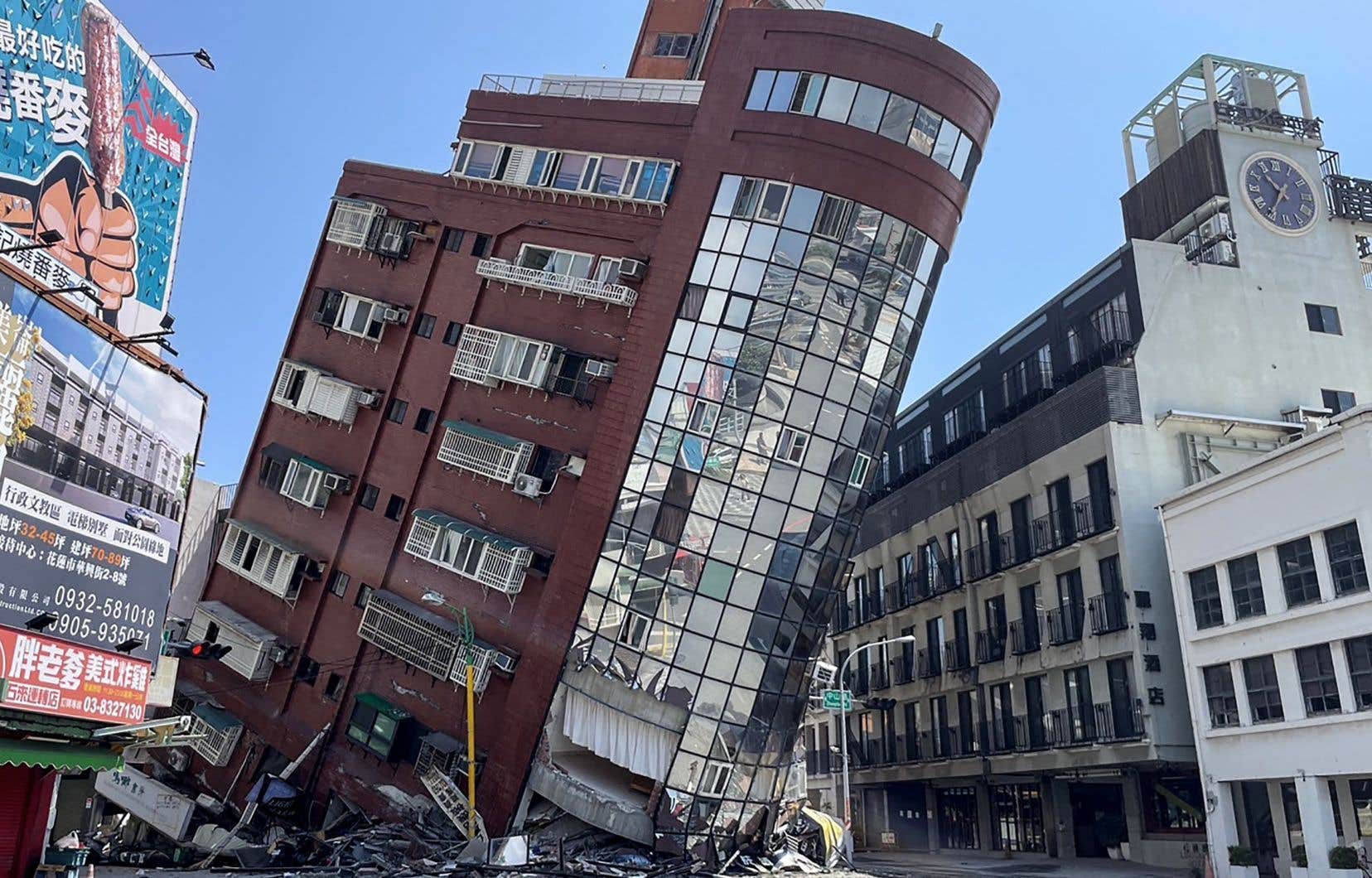At least nine people died and more than 800 were injured in Taiwan, according to a new report from the authorities, in an earthquake with a magnitude greater than 7 which occurred on Wednesday, the most powerful to hit the island in 25 years.
All the deaths occurred in the Hualien region, near the epicenter of the earthquake in the east of the island, the national fire agency said.
Three of the victims died on a hiking trail, crushed by rocks caused by the earthquake. Another victim, a truck driver, was killed in a landslide while approaching a tunnel.
The agency did not immediately indicate the circumstances of the other deaths, bringing the number of injured to 821, without specifying the seriousness of the injuries.
The magnitude of the underwater earthquake was estimated at 7.5 by the Japan Meteorological Agency (JMA), 7.4 by the United States Geological Survey (USGS) and 7.2 by the meteorological agency Taiwanese (CWA).
It occurred shortly before 0000 GMT, according to these agencies, and was followed by several aftershocks. Its epicenter was detected at shallow seas off the eastern coast of Taiwan.
“My home shook violently, the paintings on the wall, my television and my bar fell,” a Hualien resident told SET TV.
Strict construction rules and good preparation for natural disasters, however, seem to have made it possible to avoid a major catastrophe for the island, which is regularly hit by earthquakes.
Local television showed multi-story buildings in Hualien and elsewhere tilting dangerously from the quake, while a warehouse in New Taipei Municipality collapsed. The city’s mayor said more than 60 survivors had been pulled from the ruins of the building.
Activity at some factories at Taiwan Semiconductor Manufacturing Company (TSMC), the world’s largest chipmaker, was briefly interrupted, a company official told AFP.
Tsunami alerts lifted
Bulldozers were mobilized to clear rocks blocking roads to Hualien, according to images broadcast by local channels.
The main roads leading to the city pass through numerous tunnels and authorities fear vehicles and passengers could be trapped inside.
“We must carefully check how many people are trapped and we must rescue them quickly,” Vice President Lai Ching-te, set to become Taiwan’s new president in May, told reporters.
Current President Tsai Ing-wen has ordered local and central government agencies to coordinate and announced that the military will also provide support.
The main railway linking the capital Taipei south along the eastern coast, which was cut in several places, was being repaired.
The earthquake initially triggered tsunami warnings in Taiwan, the southwestern islands of Japan and several provinces in the Philippines, where people in coastal areas were urged to seek higher ground.
Japanese and Philippine authorities eventually canceled their warnings, and the Pacific Tsunami Warning Center, a regional observatory based in Hawaii, United States, announced around 2 a.m. GMT that “the tsunami threat has now largely passed.” », while calling on residents of coastal regions to remain cautious.
Naha airport, the largest on the Japanese island of Okinawa, has temporarily suspended air traffic.
Tremor felt in China
“The earthquake is close to the coast and shallow. It is felt throughout Taiwan and neighboring islands… It is the strongest in 25 years, since the 1999 earthquake,” Taipei Seismological Center director Wu Chien-fu told reporters.
In September 1999, a 7.6 magnitude earthquake killed 2,400 people, the worst disaster in Taiwan’s modern history.
Across the Formosa Strait, residents in eastern China’s Fujian province and other areas reported on social media that they also felt strong tremors.
China, which considers Taiwan to be part of its territory, said it was observing the earthquake “very carefully” and said it was “ready to provide aid to the victims”, according to the national news agency New China.
